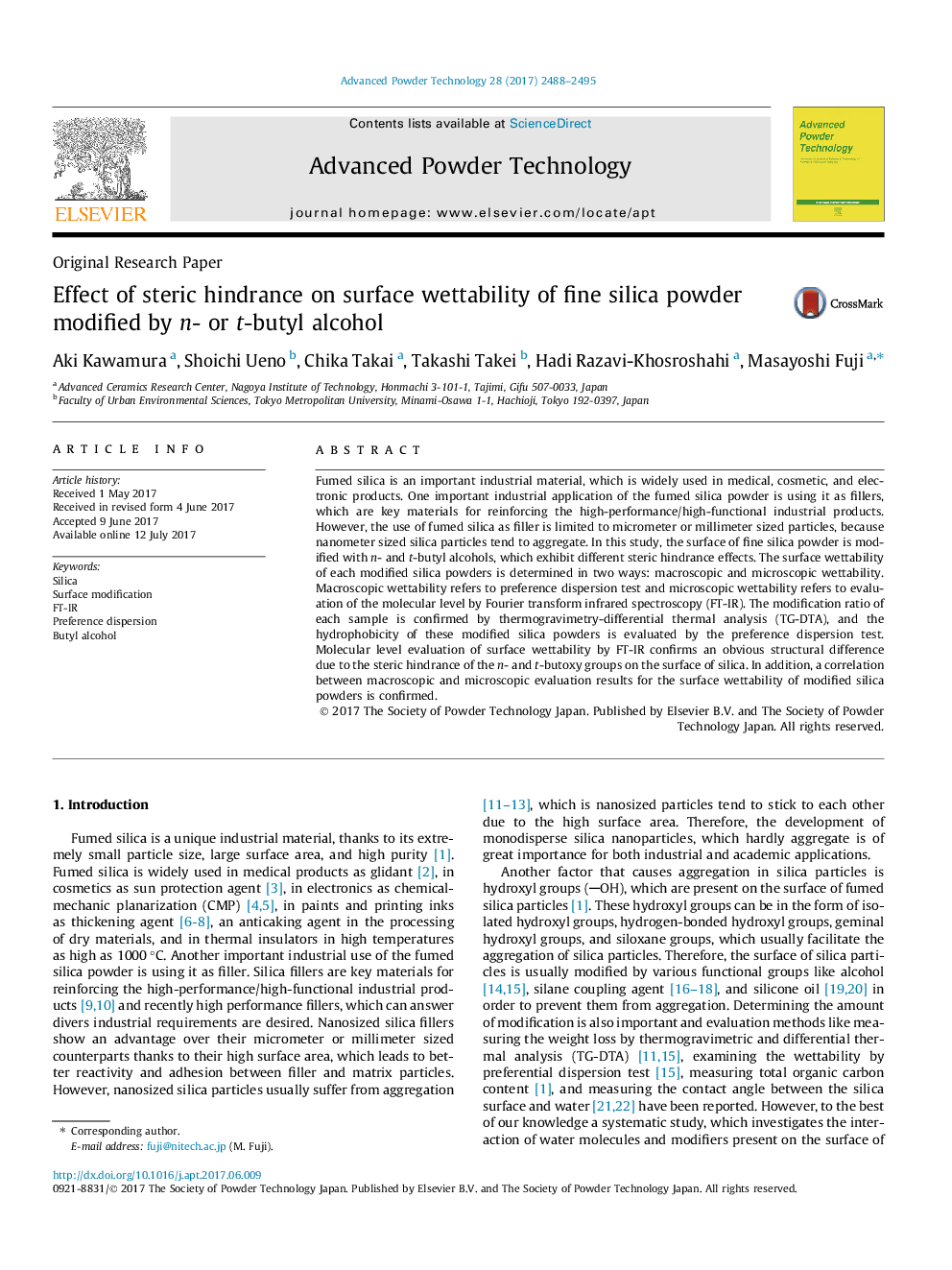| Article ID | Journal | Published Year | Pages | File Type |
|---|---|---|---|---|
| 6464520 | Advanced Powder Technology | 2017 | 8 Pages |
â¢Surface of fumed silica modified by variable amounts of n- and t-butyl alcohol.â¢Steric hindrance of surface modified groups gave an effect to surface wettability.â¢Macroscopic hydrophilicity/hydrophobicity studied by preference dispersion tests.â¢Microscopic wettability of modified silica surface was observed by FT-IR.â¢Macroscopic and microscopic observation results were correlated.
Fumed silica is an important industrial material, which is widely used in medical, cosmetic, and electronic products. One important industrial application of the fumed silica powder is using it as fillers, which are key materials for reinforcing the high-performance/high-functional industrial products. However, the use of fumed silica as filler is limited to micrometer or millimeter sized particles, because nanometer sized silica particles tend to aggregate. In this study, the surface of fine silica powder is modified with n- and t-butyl alcohols, which exhibit different steric hindrance effects. The surface wettability of each modified silica powders is determined in two ways: macroscopic and microscopic wettability. Macroscopic wettability refers to preference dispersion test and microscopic wettability refers to evaluation of the molecular level by Fourier transform infrared spectroscopy (FT-IR). The modification ratio of each sample is confirmed by thermogravimetry-differential thermal analysis (TG-DTA), and the hydrophobicity of these modified silica powders is evaluated by the preference dispersion test. Molecular level evaluation of surface wettability by FT-IR confirms an obvious structural difference due to the steric hindrance of the n- and t-butoxy groups on the surface of silica. In addition, a correlation between macroscopic and microscopic evaluation results for the surface wettability of modified silica powders is confirmed.
Graphical abstractDownload high-res image (65KB)Download full-size image
